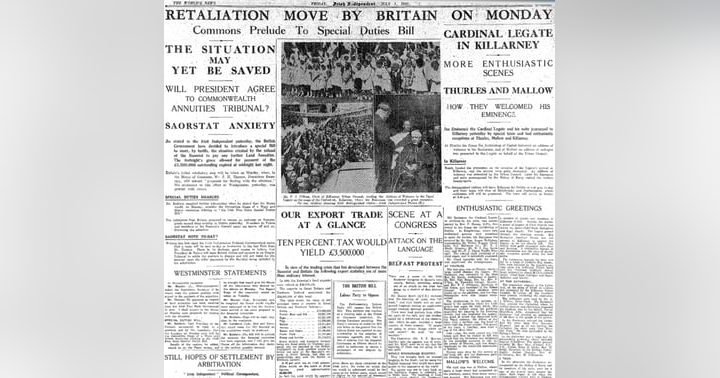The Destruction of Nelson's Pillar - March 8, 1966

The remains of Nelson's Pillar before it's final destruction
At 1:32 AM on March 8, 1966, many Dubliner's were woken by an explosion emanating from O'Connell Street, the Pillar was no more. A substantial chunk of the column was left, but the statue of British Admiral Horatio Nelson that had topped the pillar would never again overlook Ireland's capital city.
Have you listened to our podcast? Get the latest on our Episode Page.
The once towering granite column, had been completed in 1809 and funded by the Dublin merchant class intent on proving their loyalty to the British Crown and to commemorate Nelson and his famous naval victory at the 1805 Battle of Trafalgar. Sadly for Nelson, he did not make it out of the battle alive having died from a musket wound at the age of 47.

The pillar was built through public subscription for the cost of £6,856. Francis Johnston, who would later go on to design the nearby General Post Office, is credited with the design although it was based on a more elaborate idea by William Wilkins. A 13 foot high statue atop the pillar was sculpted from Portland stone by Corkman Thomas Kirk.
The pillar proved to be a populist tourist attraction. On completion it stood 134 feet or 40 meters high. Visitors could ascend its 168 step interior spiral stairway to emerge on a viewing platform at the base of the giant statue. The view across Dublin city was unmatched.

However, for a growing segment of the Irish population, particularly those harboring nationalist sentiments, Nelson represented British dominance and oppression. This resentment simmered for decades, fueled by events like the 1916 Easter Rising, where rebels fought for Irish independence. The continued presence of Nelson above O'Connell Street, a thoroughfare named after a revered Irish nationalist leader, became increasingly incongruous.
The destruction itself was a clandestine affair and attributed to the Irish Republican Army (IRA). Likely the forthcoming celebration of the Rising's 50th anniversary had been part of the motivation to blow Nelson of his perch. For years many Dubliners wondered exactly who had reworked Dublin's skyline. At the turn of the millenium, Liam Sutcliffe, an IRA volunteer during the Border Campaign, was revealed to be the agent of destruction. Thankfully, his bomb had done no serious damage to anybody other than Nelson.
The remaining, heavily damaged pillar posed a safety hazard. The Irish Army was called in to complete the demolition with a controlled explosion a week later. The event captured the public's imagination, with some celebrating the removal of a hated symbol and others mourning the destruction of a historic landmark.
The head of Nelson, recovered from the wreckage, became an unexpected source of amusement. Students from the National College of Art and Design (NCAD) stole it, using it in fundraising pranks. After a period in the Civic Museum, it eventually found a permanent home in the Dublin City Library's Reading Room, offering a silent, sardonic commentary on Irish history.
Nelson's Pillar statue and the head along with author's hand for scale
The destruction of Nelson's Pillar remains a controversial event. For some, it marked a necessary step towards national identity and the removal of a colonial symbol. For others, it was an act of vandalism that erased a piece of Dublin's history. Regardless of perspective, the event stands as a stark reminder of Ireland's complex relationship with its past and its struggle for self-determination.

















